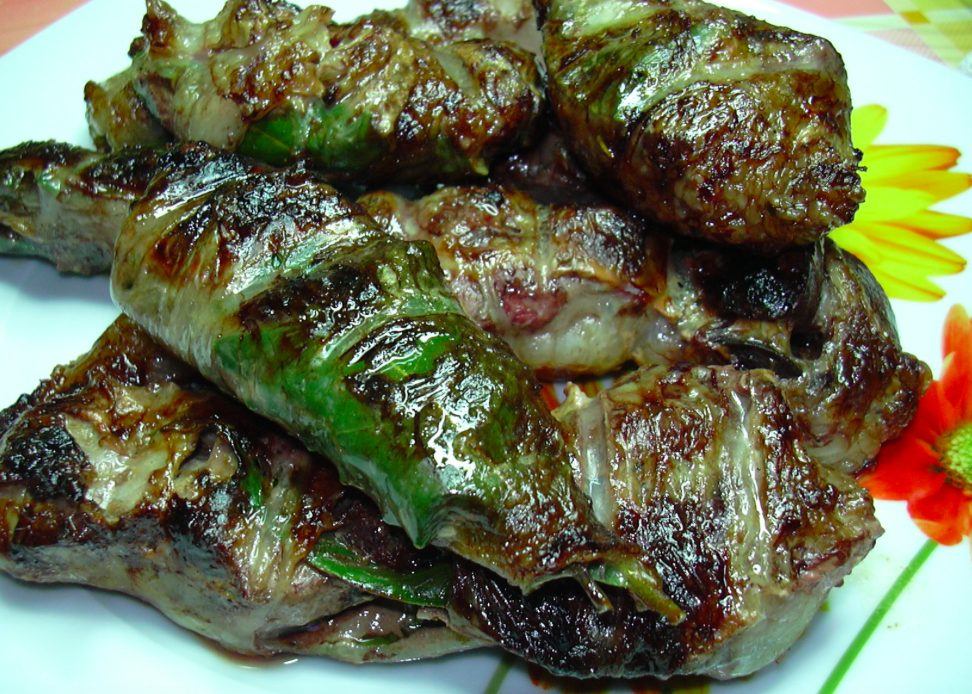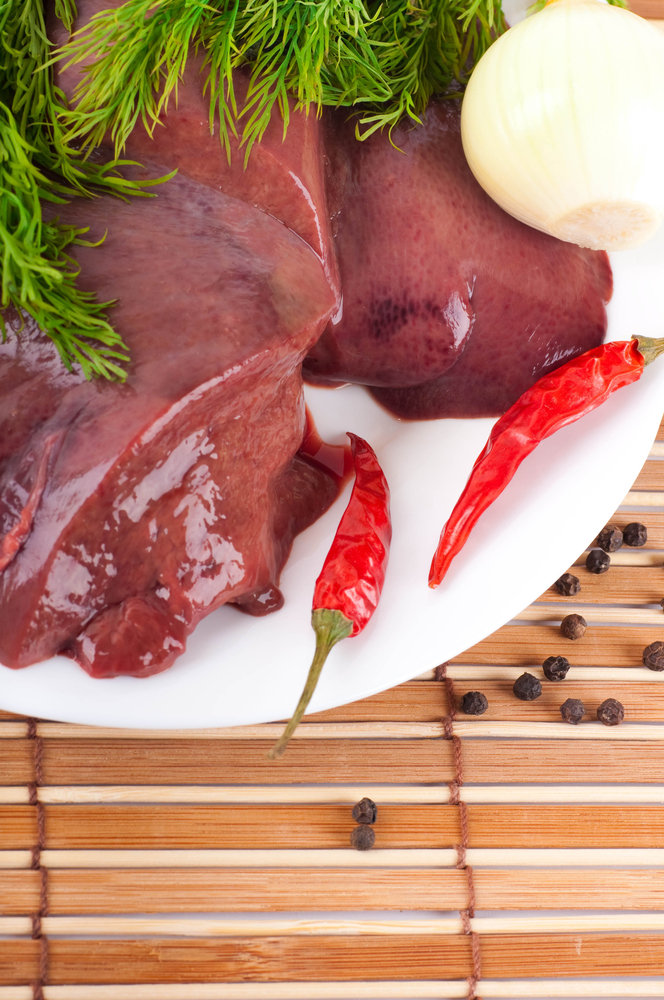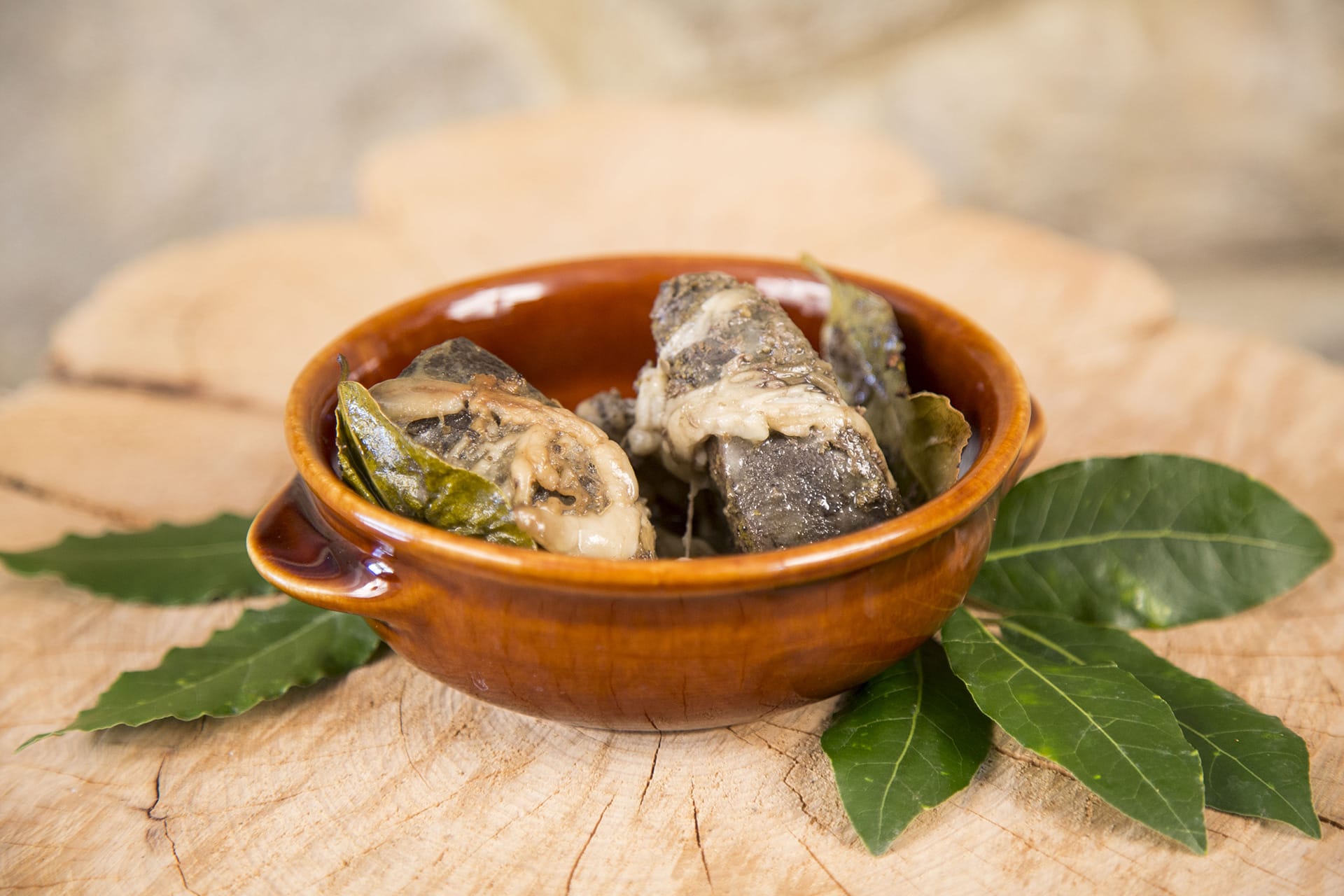The culture and tradition of a territory do not live only through the history and past that characterized it; the popular wisdom that is handed down over time through culinary habits, can tell a lot about his homeland: a fitting example are pork livers.
Tuscany is a beautiful land, strongly anchored and proud of its illustrious past; the beating heart of the best Italian literary tradition, cradle of art and home of countless characters who still shine today to our history, tells its greatness even through the best food and wine tradition.
Tuscan cuisine is inextricably linked to its peasant history; it consists of essential and tasty recipes in its simplicity. The use of genuine products strongly welded to the best peasant imprint, has helped to create a solid culinary tradition at the same time sober and innovative.
From the best peasant traditions and Tuscan wit, the "Pork Fegatelli" are born, a recipe linked to the best territoriality in full respect of the products used.

Ingredients for Tuscan Fegatelli
Ancient recipe, spread throughout the region, the Tuscan Fegatelli are the symbol of a simple cuisine that arises from the idea of not throwing anything away and employing even the least noble parts of the pig. From an idea of tasty recycling, the Tuscan tradition has given us a tasty and original dish.
The ancient origin of the dish is evidenced by some cooking recipes reported in a text dating back to 1500; also mentioned by the poet Pietro Aretino who trace its geographical origin in the Florence area.
Let's now see, in detail, the ingredients needed for the preparation for a tasty dish with doses for four people.
Ingredients
- Pork liver. The original protagonist of the recipe, the pig liver is a food that belongs to the group of animal offal and is rich in specific vitamins and minerals. Its high protein value at the expense of carbohydrates and lipids, makes it necessary food in a balanced diet. A 500-gram serving will be enough for our recipe.
- Pork net. Otherwise known as omento, it is a thin membrane with a retose-looking membrane that covers the pig's stomach in its outer part. Made up almost exclusively of lipids, the network is used in the kitchen as a food coating. For our recipe it will take at least 100 grams.
- Fennel and laurel seeds. From the Tuscan tradition comes the exclusive use of these herbs to garnish the recipe; other variants are possible, but do not belong to the best regional culinary culture.
- 2 cloves of garlic; salt, pepper and extra virgin olive oil in sufficient quantities.
As a testament to the strong regional connotation of the dish, the availability of the most characteristic foods is not entirely immediate. While in Tuscany it is common to find from the butcher both pig liver and retina, most often sold by s side, in other areas of Italy, it can be more difficult to find what is needed.
The recipe for pork livers
The preparation of the raw material is the first step towards reaching the final goal. First of all, we need to soak the pig's retina; In a bowl containing hot water and vinegar, we dip the net for enough time. At the end of the procedure, we drain and place the oment on a chopping board.
 Next we move on to the preparation of pork liver. After washing and denervated it, we proceed to cut it into pieces of such size that they are easy to thread: some propose a maximum thickness of one centimeter, other versions, on the other hand, prefer a wider thickness around three.
Next we move on to the preparation of pork liver. After washing and denervated it, we proceed to cut it into pieces of such size that they are easy to thread: some propose a maximum thickness of one centimeter, other versions, on the other hand, prefer a wider thickness around three.
Each cup of liver should then be flavored with pepper, salt, and for those who want it, lemon zest; In the center of each piece should be put the wild fennel seeds and laurel.
Each slice of liver is then rolled up on itself to create a kind of bundle that is wrapped by the pig's retina; this casing is then threaded in order to create a kind of skewer. The traditional recipe would recommend the use of a laurel branch or a fennel stalk, but modernity has left the space for a much more prosaic use of a toothpick or a wooden stick.
In a frying pan or in the oven: you choose!
At this point the pork slices are ready to be cooked. Here we have two possible routes; an early version proposes baking at 180 degrees for about twenty minutes, while a second would prefer baking in a pan.
In the latter case, the Fegatelli should be cooked in a pan of crock after frying in a drizzle of oil two cloves of garlic. Our skewers are, at first, browned on both sides over high heat and then bathed in a drizzle of cognac or red wine. At the end of the evaporation of the alcoholic element, the Fegatelli slowly continue their cooking over low heat and closed lid.
After about 40 minutes during which they need to be turned often and, if necessary, wet from time to time, the Tuscan Fegatelli are ready.
And why not the grill?
A third version,finally, recommends the cooking of the skewers on the embers: it will be able to give the dish a completely special flavor and an intoxicating scent.

Pork slices are a real treat even for even the most demanding palates; the intense taste makes it necessary to combine with a red wine, firm and with a young tannin able to accompany the taste without suffering too much.
If served as a starter, they can also be accompanied by an aromatic white wine with a good alcohol content.
The Livers are a poor dish but at the same time lustful and succulent. To try and enjoy in one breath. In these complicated days, why don't you try to make them at home? Let us know how it went.
#dreamingtuscany #istayathome
Image source: braciamiancora, agriturismolpoggetto, cortonaweb










 Map
Map